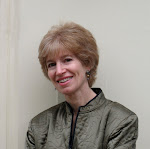When I first came across the fact that Eliza Anderson had founded and edited a magazine at the age of 26 in 1807, I thought: hmmm, that seems unusual. But at that point I didn't realize how unusual it really was.
I started doing some research into the history of women editors and journalists, and I was startled to discover that (a) nobody knew about Eliza Anderson, and (b) the secondary sources that talked about 19th-century women editors identified another woman--a woman who came after Anderson--as the first women to edit a magazine. For example, an online database identifying 65 women who edited periodicals or served as printers before 1820 doesn't mention Anderson. And her name doesn't appear in a list of over 600 female editors of the 19th century that appears as an appendix to a book called Our Sister Editors, by Patricia Okker.
That book identifies a woman named Mary Clarke Carr as probably the first woman to edit a magazine in the United States, as does an amazing book about Clarke Carr called Dangerous to Know, by Susan Branson. (Clarke Carr was the ghostwriter for a scandalous memoir by a woman who tried to rescue her lover from the gallows and kidnapped the governor of Pennsylvania; Branson's book reads almost like a novel.) Clarke Carr began editing and publishing a women's magazine with the charming name of the Intellectual Regale, or Ladies Tea Tray, in Philadelphia in 1814.
Not to take anything away from Clarke Carr's achievement, but here's the thing: Clarke Carr, and almost all the women editors of the 19th century who came after her, edited magazines for women. These women editors embraced their peculiarly female role, preferring to call themselves "editresses" rather than editors. But not only did Anderson predate them, her magazine didn't confine itself to what were considered women's concerns (cooking, fashion, household advice--along with some fiction and poetry). On the contrary, Anderson clearly saw the Observer as a general-interest magazine, taking on any and all cultural issues of the day--and she never referred to herself as an editress. And while the Observer wasn't primarily political--politics being a preserve that was seen as exclusively male--it invited and sometimes published pieces that touched on political issues.
In her book Our Sister Editors, Okker mentions that a woman named Frances Wright edited a general-interest magazine called the New Harmony Gazette in 1825--possibly the next instance of this after Anderson's one-year stint as editor of the Observer. But New Harmony was a utopian socialist community in the wilds of Indiana--presumably a more receptive locale for this sort of thing than conservative, merchant-dominated Baltimore.
Okker does quote a woman who had an experience similar to Anderson's own: Jane Grey Swisshelm, who was the editor and publisher of an antislavery periodical in Pittsburgh in 1848. Characterizing a male editor's reaction to her undertaking, Swisshelm wrote: "A woman had started a political paper! A woman! Could he believe his eyes! A woman!”
As we'll see, forty-one years earlier Eliza Anderson was moved to voice sentiments that echoed--or should I say presaged--Swisshelm's almost word for word.
Wednesday, April 7, 2010
Subscribe to:
Post Comments (Atom)





No comments:
Post a Comment